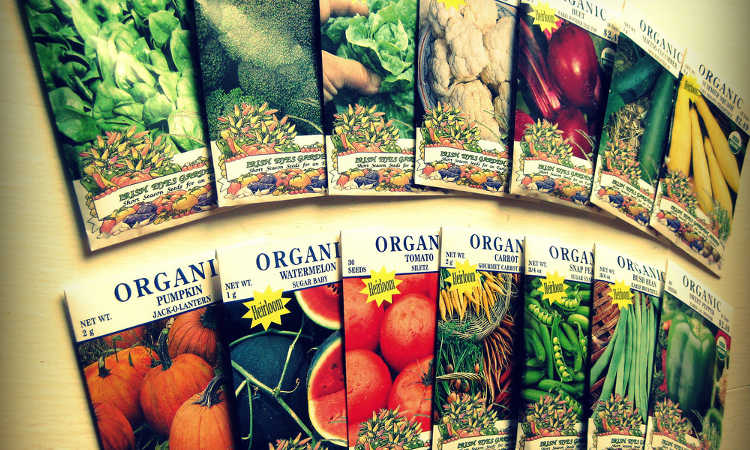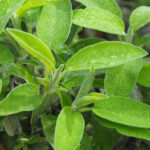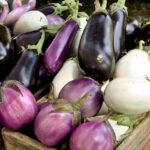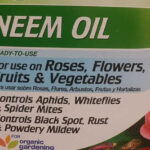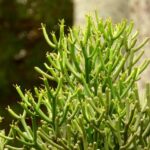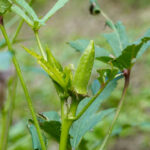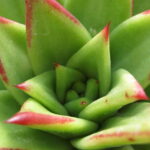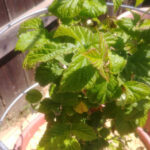If you’re like me, storing seeds is a necessity. You may have particular flowers that you grow every year like geraniums, or a favorite kind of kale or watermelon that you love the taste of. But knowing how to store seeds is incredibly important, as poorly-stored seeds won’t germinate.
No matter if the seeds are large or small, these seed storage tips will help you keep your seeds viable for long periods of time. Even if you just need them to be viable until the next planting season, it’s important to have the right conditions in place!
So if you found that rare seed type you’ve been looking for at long last, go ahead and grab a packet or two, and I’ll go over the best way to save and store seeds for long term use!
Subscribe to the Epic Gardening Podcast on iTunes
Learn How To Store Seeds For Years
Those of us who’re willing to collect and store seeds year after year have a slight advantage. We don’t need to look at years down the line, only how to get us as far as the next planting season.
Seed Saving: The First Step
 These horned melon seeds have a gel that must be removed before drying. Source: Eran Finkle
These horned melon seeds have a gel that must be removed before drying. Source: Eran FinkleWhether you’re trying to decide how to store vegetable seeds or how to store flower seeds for next year, the process is virtually the same. First, you have to save seeds. Allow the plant’s seeds to mature as they normally would, then start collecting seeds!
Once you collect seeds, if there is a gel (such as in tomatoes), you’ll need to remove that gel. It is an added source of food for the seed, but it doesn’t help while preserving the seeds.
To remove this gel, place your gel-coated seeds in a bowl of water with a lid. Once per day, shake them up or stir them. The gel will break down and come off the seeds, and you can then rinse them off entirely.
Drying & Storing Seeds
Once your seeds are bare, it’s time to dry them. Ideal drying temperatures are between 60-100 degrees, and your seeds should be spread out in a thin layer on a piece of parchment paper. Place them in a well-ventilated place. Stir them every day or two to ensure that they dry evenly.
If you have a food dehydrator that has extremely low temperature settings (80-90), you can use this to help dry out your seeds. However, do not run it for more than a half hour at a time to prevent accidentally cooking your seeds.
A fan can help! Place your seeds between two fine meshed screens (I use air conditioning filters), and use bungee cords to secure the filters to the front of a box fan. Prop your fan on a couple bricks to allow air to come through the fan from underneath, and turn it on.
Small seeds should dry via forced airflow from a fan in 24-48 hours. Large seeds like pumpkin seeds require much more time, 7-10 days or so.
Once dry, place your seeds into a storage container. This can be paper envelopes inside a Mason jar, a seed storage box, even zip-closure bags with all the air pressed out. Write the type and date on your packets!
Place your seeds in a cool, dark location. 60-65 degrees should be fine for collecting seeds for a year.
How To Store Them Properly For The Long Term
What if you’ve got a large seed collection, or are looking to swap out varieties every other year or so? Maybe you’re being proactive and saving seed for survival purposes? The best way to store seeds long term is to create the perfect conditions for your seeds to dwell in.
The secret is in two words: cool and dry.
Ideally, there should be no moisture around your seeds. The temperature should be 40 degrees Fahrenheit or lower, but should not drop into sub-freezing temperatures as that kills some forms of plant embryo. It should be dark or dim, and it should be pest and critter free.
Consider Cold Storage

I recommend using a cold storage option like the NewAir AB-850 Beverage Cooler for your seed storage. It’s compact and can be tucked into small spaces easily, and has full temperature control so you can set it to your preferred chill level. Use promo code KEVIN20 for 20% off!
While you can simply hide seeds in the back of your refrigerator, you’re probably going to want to keep your seeds cooler than your food is. Many people store seeds at or around 35-40 degrees, and the lower end of that scale may cause frost damage to your food.
Having a separate, temperature-controlled location for your seeds is a really good idea. Not only can you optimize for best long-term seed storage, but you won’t be letting the cold out multiple times a day.
Avoid Moisture

A cooler environment will cause moisture to condense more readily. You will need to have a fully sealed container to keep that moisture out. Alternately, you can add moisture absorbing packets or fully dried rice grains to your storage box to keep humidity at bay.
Plastic bags are not the enemy in this type of storage, but you have to be extremely careful that no moisture is trapped inside the bag. Press out all air if possible and make sure it’s completely closed so moisture doesn’t get inside.
Temperature & Light Conditions
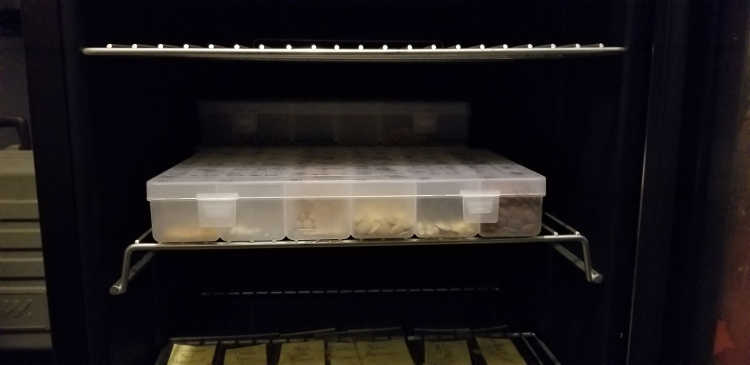
Maintain the temperature at your optimal range. It’s fine if you have to open your cooler every so often to put in or remove seeds, but if there’s too much fluctuation, it can become a problem. I recommend aiming for 35-40 degrees as the ideal temperature.
If you can, put your seeds into an opaque packet or inside an opaque box. This adds another layer of light prevention, although the temperature and humidity are the key factors in cold storage like this.
Taking Your Seeds Out Of Cold Storage
When removing your seeds from cold storage, take the box or container they’re in out and do not immediately open it. Instead, set the container somewhere and walk away until it has reached ambient room temperature.
Rapid temperature changes won’t shock your seeds, but a quick temp change can cause moisture to condense inside your container, and it can be difficult to remove before you put your seeds away again. Letting it warm up naturally avoids this issue.
For this reason, I recommend you organize your seeds in boxes based on the planting season. After all, if you to get ready to plant in February, there’s no point in starting seeds slated for July or August, and they can continue to stay stored away.
How Long Are Seeds Good For?
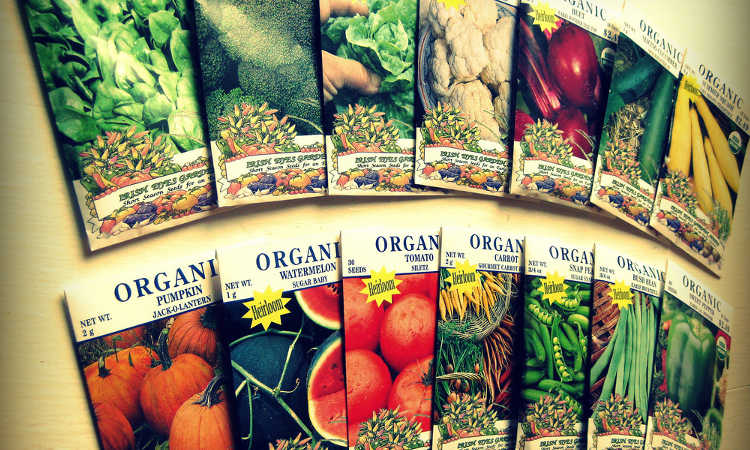 A variety of seed packets. Source: timmyjimi
A variety of seed packets. Source: timmyjimiThis is a tricky question, and it really depends on what type of seeds you’re storing as well as the conditions that they’re stored in.
Most annual flower seeds are viable for 1-3 years in optimal cold storage conditions without significant degradation. Perennials can go a bit longer, from 2-4 years.
How long do vegetable seeds last? That’s more difficult to establish, and it may have to do with natural oils in the seeds. The oilier the seed, the more likely that the oils will spoil, and your seed will fail.
Approximate Storage Times
Corn, spinach, parsnips, and alliums such as chives or garlic seem to have the shortest seed life. These tend to have higher oil content than other vegetable types, and you should aim at replacing these types every year.
Every two years, you should be replacing your onion or leek seeds, your bush or pole beans, your peppers, beets, parsley, and Swiss chard.
Three years? That’s when you need to replace your lettuce, melons, carrots, squash, tomatoes, cucumbers, rutabagas, and Asian greens such as mizuna or bok choy.
Radish seeds and turnip seeds can last up to four years. Brassicas such as broccoli, cabbage, kohlrabi, Brussels sprouts, and cauliflower tend to last 4-5 years, as do kale and collards.
What About Longer Storage?
These numbers are all estimates for the “best by” date. Much like food, seeds don’t immediately go bad once they’ve passed that date. Their germination levels just slowly continue to drop, making it far less likely for them to produce a healthy live plant.
There are reports of people successfully germinating seeds that are decades old, even 80 years later. The subsequent plant has to be very carefully cared for, as it will be initially quite weak. But it is possible! It’s just increasingly unlikely as time goes on.
I would not keep any seeds for more than 10 years at a time if I needed them to remain viable. Even then, 5 years is a better maximum range.
Seeds in the Freezer: Good Or Bad?
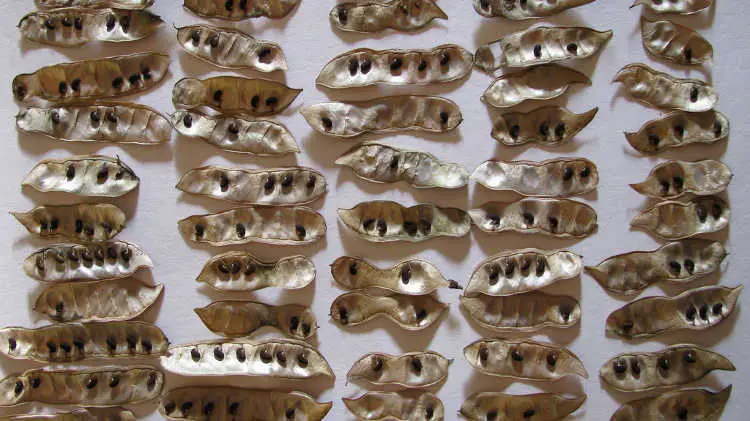 Seeds still in their seed pods. These should be dried before storage. Source: bangli 1
Seeds still in their seed pods. These should be dried before storage. Source: bangli 1Should you freeze seeds? I lean towards “no”, overall.
For most, freezing is a risky proposition. Your freezer needs to be able to maintain a constant temperature of -20 to -15. Most of us open up our freezers far too regularly to keep them cold enough to keep seeds preserved.
Residential freezers also aren’t as cold, chilling to -10 to 0 degrees Fahrenheit. Now, if you want to buy a chest freezer that can reach -15 to -20 temps and freeze seeds, they exist, but again… what if the power goes out at an inopportune time and your seeds start to thaw?
This is not to say that freezing is always a bad idea. Seed storage banks do it!
But seed storage banks typically flash-freeze their seeds to chill them very rapidly. They also use large freezers that are opened at most twice a year, and have huge backup generators. At home, we don’t have those options readily available.
In the end, no matter what zombie apocalypse or world war we want to be prepared for, a freezer won’t help. Once the power goes out, your cold storage ends, and then you are back to square one. It’s best to store smaller quantities of your favorites for shorter periods of time.
Seed Storage Containers & Supplies
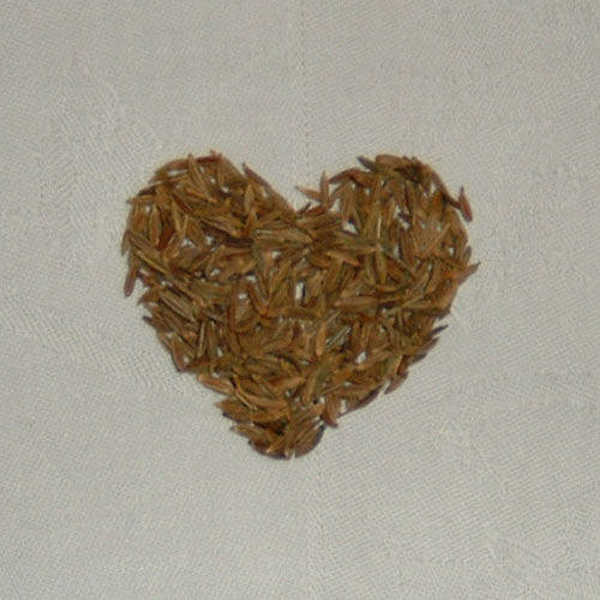 Your seeds will last longer and be more viable if stored right! Source: cuorhome
Your seeds will last longer and be more viable if stored right! Source: cuorhomeThere’s a few options for seed storage containment that I’d definitely recommend!
I personally like to store my seeds in coin envelopes, such as the JAM #1 Coin Envelope. These paper envelopes are a good size to fit into an airtight box. If you want to be doubly-safe, you can use a product such as an MTM Survivor Dry Box, which easily keeps moisture at bay.
If using paper envelopes, you’ll want some form of dessicant to reduce moisture as much as possible. There are two options: you can use dry white rice to absorb moisture, or you can opt for a silica gel packet like Wisedry Food-Safe Silica Gel Packets.
Do you have a vacuum sealer in the house? If you do, try BAT Pack Small Mylar Sample Bags. You can vacuum-seal these and keep your seeds free from damp air. Larger mylar bags are available if you buy seed by the pound for microgreens!
What if you’ve got a lot of tiny seeds and don’t want to juggle packets? Consider a multiple-chambered storage box like the AideTek BOX-ALL 72 Enclosure Box. Each chamber has a lid and the seeds will stay separated.
Any of these options can be placed inside cold storage in a NewAir AB-850 Beverage Cooler, allowing you to keep your seeds neatly organized in a cold storage option that’s safe. And the better your seeds are protected, the longer they’ll last.
What Causes Seed Degradation?
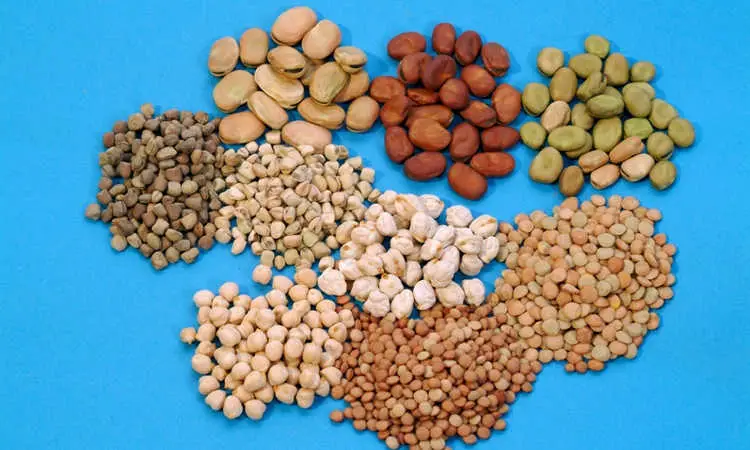 Multiple types of dry seeds. Source: ICARDA
Multiple types of dry seeds. Source: ICARDALike all organic materials, seeds will break down over time.
Most of us learned in grade school about the various parts of a seed. As a refresher, there’s three major parts. The seed coat is the external hard shell of the seed. Inside, there is the plant’s embryo, along with what’s called the endosperm – a source of food to sustain the embryonic plant.
The plant itself is dormant while hidden within its hard external casing if it’s stored properly. In the wrong environment, the plant is going to have a hard time “staying asleep”, so to speak, and may start trying to germinate.
Keeping the plant dormant is important, but even if it is, the endosperm will gradually break down just like any other food product. It is predominantly made of starches, and those last for quite a while, but even they degrade in time.
In addition, some seeds are oil-rich, and the oil can spoil as well. Most often, these are the seeds with the shortest lifespan.
There are other factors which will speed this degradation. Let’s examine these in a bit more detail!
Light
Sunlight is the enemy when storing many organic products. This is doubly true for seeds, because the light stimulates the tiny plant inside the seed. As plants feed on sunlight just as much as they do on the soil, a light source encourages them to try to sprout.
Therefore, it’s essential that you keep your seeds in the dark as much as possible. Opaque containers help quite a lot, but if you don’t have opaque containers, seeds can be stored in a dark environment to prevent as much light exposure as you can avoid.
Moisture
 Maize seed samples at a germplasm bank. Source: CIMMYT
Maize seed samples at a germplasm bank. Source: CIMMYTSoil is more than just a source of nutrition for a plant. It’s also what keeps water right at the roots of the plant so the plant’s able to get a drink.
It shouldn’t come as a surprise that moisture can also spur germination. After all, when a seed is below the soil’s surface, light may not penetrate that far, but the moisture will. That’s great if you’re trying to grow alfalfa sprouts, but not so good when you’re trying to store seeds!
Moisture can cause the outer seed wall to soften, which also opens the seed up to the risk of rot. This is the enemy when you’re trying to promote good dormancy. Avoid it as much as possible.
Temperature
Along with moisture, soil temperature comes as a signal to a seed that it’s germination time. However, your seed doesn’t know the difference between being planted in good potting soil and being stored inside a paper envelope.
Since most plants germinate at temperatures above 60 degrees Fahrenheit, keeping them in conditions below that should prevent your seeds from sprouting.
If it’s warm enough that the plant will normally germinate, you’re running the risk of your preserved seeds not staying dormant. And in non-dormant conditions, they will degrade more quickly.
Pests
Have you ever watched a squirrel with an acorn? If so, you know that pests do in fact go after seeds, and there’s a long list. It’s not limited to just rodents like mice, chipmunks, squirrels or rats. Many insects also consume seeds, and of course so do larger animals.
It should go without saying that you need to be proactive. Use some form of pest-proof containers. If they’re moisture and pest proof, that’s even better.
Disclosure: Newair provided their mini-fridge to Epic Gardening to use and evaluate for review purposes. See our review process here.

